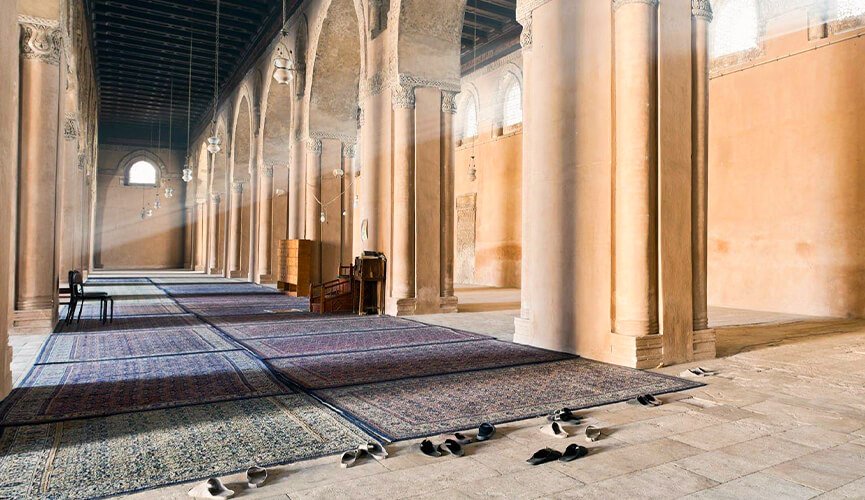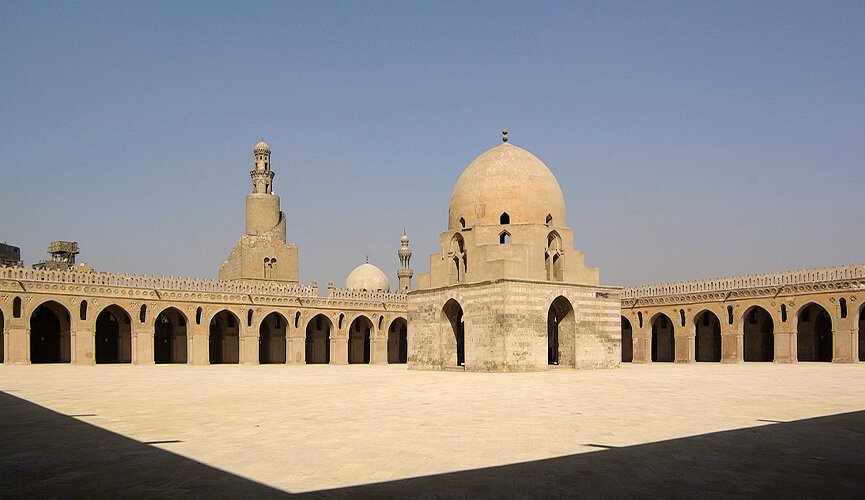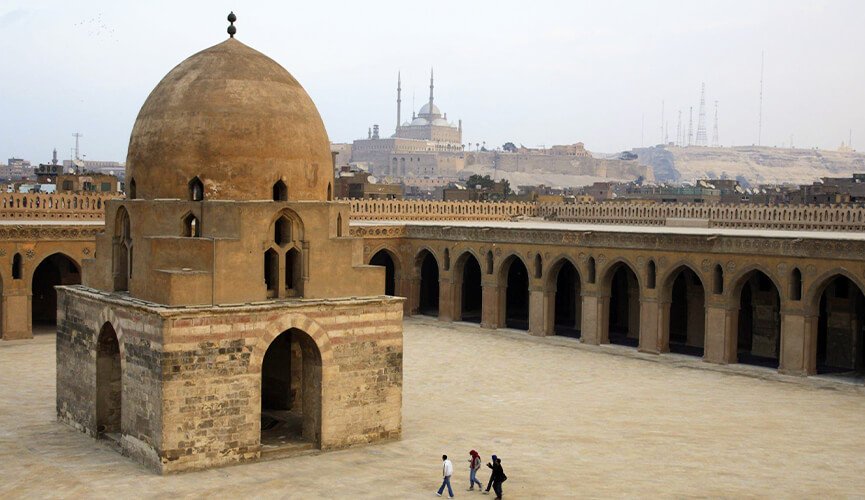The Mosque of Ibn Tulun stands as a testament to the rich Islamic heritage of Cairo, Egypt. Named after its founder, Ahmad Ibn Tulun; this architectural marvel is not only a place of worship but a cultural and historical landmark of immense significance. Its distinctive design, unique features, and cultural contributions have captivated visitors worldwide. Let’s embark on a journey to explore the rich history and architectural splendor of the Mosque of Ibn Tulun.
Historical Background
We must look into its history to fully understand how beautiful the Mosque of Ibn Tulun is. The mosque was built during the Tulunid Dynasty, which ruled in the 9th century. Ahmad Ibn Tulun was a Turkish governor of Cairo by the Abbasid Caliphate. He had big plans for the city, and building this mosque was essential to his intent to make a new city. Ibn Tulun’s big goal was to create a lively town that could compete with places like Baghdad and Damascus.
Architectural Significance
In Islamic art and architecture, the Mosque of Ibn Tulun is a critical piece of architecture. It is a crucial link between the early types of Islamic architecture and the more complex styles that came later. The mosque shows how different cultures can work together to make a unique and beautiful design. This work of art has made an everlasting mark on the history of Islamic building, inspiring builders and thinkers for generations.

Construction and Design
The Mosque of Ibn Tulun has a significant position in Cairo and is in the ancient area of Sayyida Zeinab. Its form shows that much thought went into how it would fit into the scenery and meet the community’s needs. The mosque is built in the traditional Islamic style, with a big prayer hall and a garden in the middle. Limestone and wood from the area were used to make the mosque, which adds to its charm and sense of history.
Unique Features
The Mosque of Ibn Tulun differs from other Islamic building wonders in several ways. One of these features is the excellent spiral tower, which arcs up toward the sky. The outlook shows what’s important about the mosque and acts as a signal for both attendees and tourists. The mosque also has the Fountain of Ablution, a highly complex work of art used as a spiritual cleaning rite before entering the prayer hall. The sahn, a large, peaceful plaza, is another thing that draws people in.
Interior Decoration
When you go inside the Mosque of Ibn Tulun, you’ll be amazed by its beautifully decorated. The walls and ceilings are decorated with stucco and furniture that show how talented the builders of that time were. Inscriptions from the Quran and Arabic writing can be found all over the mosque, giving it a feeling of awe and respect. The throne and mihrab, the most critical parts of the prayer hall, are beautifully designed and provide the room grandeur.
Courtyard and Minaret
The Mosque of Ibn Tulun’s plaza and tower are both fantastic works of architecture. The courtyard is not just a place to do things; it is also a sign of the spiritual soul of Islamic buildings. Its form promotes a sense of community and makes it a peaceful place to think and pray. The circular shape of the tower is a visible sign that the mosque is there, and it points to the sky and gives followers hope.

Symbolism and Symbolic Elements
The Mosque of Ibn Tulun is full of symbols and things that stand for the soul of Islam. Geometric designs are used in the building to show that the world is orderly and in balance. Using geometric shapes like stars and shapes that connect makes you think of divine beauty. The mosque’s design is also based on spiritual ideas, like the path of the mind and how critical self-reflection is in Islam.
Restoration Efforts
Over the years, the Mosque of Ibn Tulun has dealt with many problems, such as natural tragedies and being ignored. But people have worked hard to restore it to stay as beautiful as before. Conservation and preservation projects have used traditional methods and worked with foreign groups. These steps will ensure that people in the future can still be amazed by how beautiful the mosque is.
Cultural Significance
In addition to being an essential piece of architecture, the Mosque of Ibn Tulun is also very important to the people who live nearby. It is a significant place of prayer for Muslims and a hub for many community events. The mosque is essential to keeping Egypt’s history and culture alive. It stands as a sign of togetherness and gives people in the area a strong feeling of identity and connection.
Involvement in the local community
The Mosque of Ibn Tulun is an active part of the local community through its many different events. The mosque provides educational programs like lessons and talks about Islamic history, art, and faith. It also helps people in need by offering social services and charity work. This shows that it wants to make people’s lives better. People from all walks of life are welcome at the mosque, which promotes a sense of unity and equality.
Visitors’ Experience
You can learn much about Islam at the Mosque of Ibn Tulun. The mosque is accessible for everyone to get to so that everyone can enjoy its beautiful architecture. Guided trips and events help people learn more about the mosque’s history, symbols, and cultural importance. People can take in the beauty and peace of this holy place as soon as they enter the prayer hall, which is filled with a spiritual atmosphere.
Contributions to Islamic Art and Architecture
The Mosque of Ibn Tulun greatly impacted Islamic art and architecture, and its form and architecture have inspired churches and other facilities worldwide. The mosque’s creative use of space, geometric patterns, and artistic elements has been a source of ideas for architects and historians. The Mosque of Ibn Tulun is an excellent example of how the Islamic world has a rich history of art and culture.
Modern architecture was changed by
The Mosque of Ibn Tulun has an effect beyond what it means in history. Modern builders still take ideas from design principles and use parts of their architecture in their buildings. The mosque exemplifies brilliant architecture because it has both standard and new features. Its lasting influence on architectural theory motivates builders to make places that make people feel spiritual, at peace, and in awe.
Conclusion
The Mosque of Ibn Tulun is a beauty that will never go out of style. It is the best example of Islamic art and building. Its historical importance, beautiful buildings, and cultural achievements make it a must-see for tourists and architecture fans. When we look at how beautiful the mosque is, we can’t help but think about Ibn Tulun’s idea and the skilled workers who made it happen. The Mosque of Ibn Tulun continues to inspire, move, and bring people together from all walks of life. It is a sign of beauty, faith, and human success.

